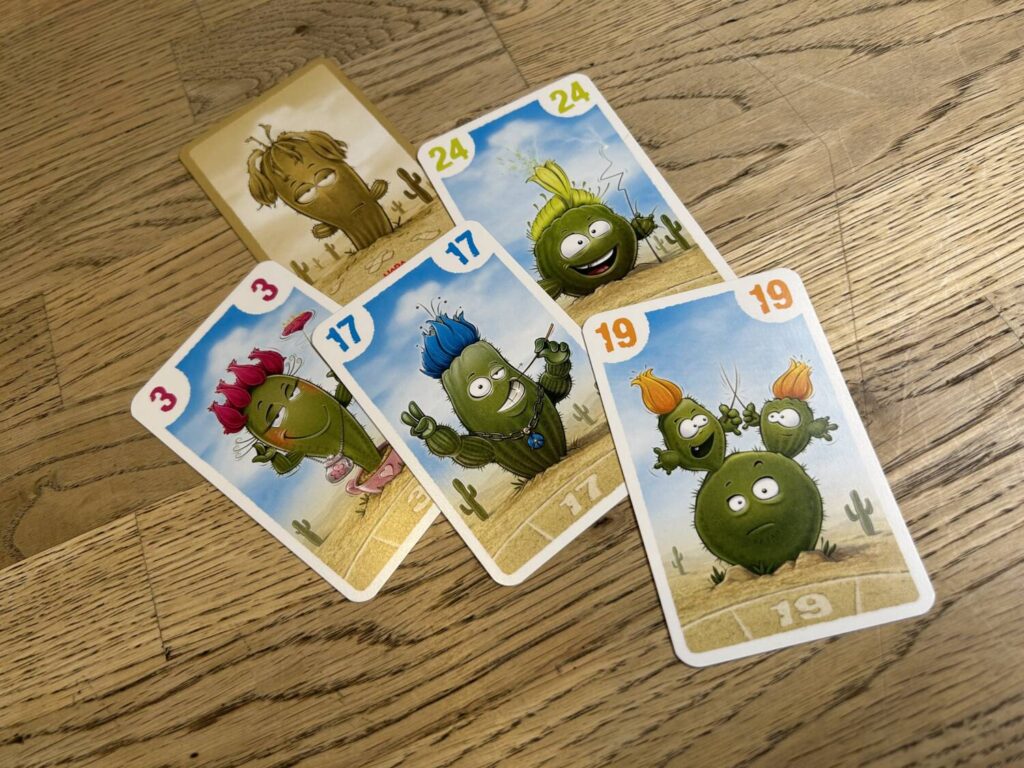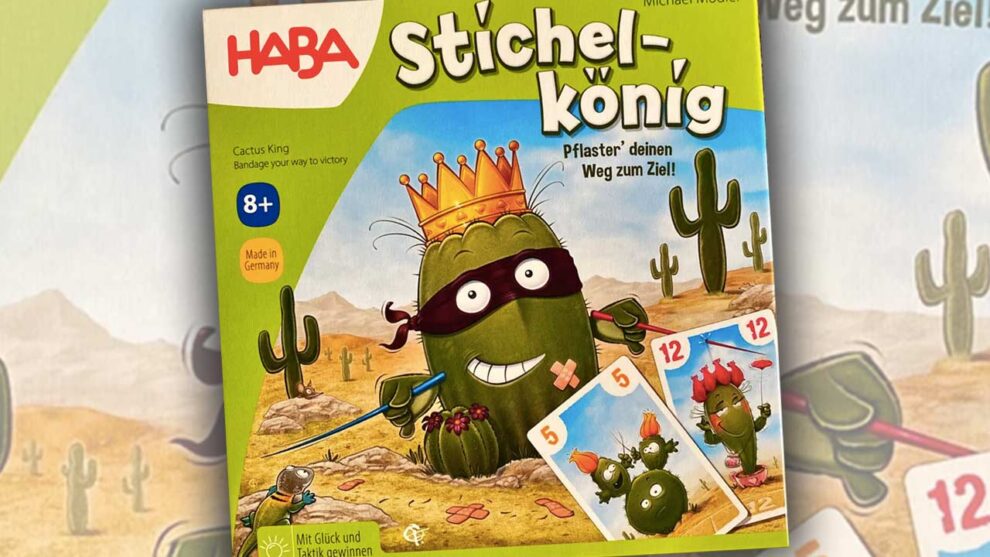Boy, how do I explain this one? Cactus King is a bit of an odd duck. Put simply, it’s a trick-taking game for families. Described in full, it’s stranger than that.
Here’s the short version: Each round, players simultaneously play anywhere between one and three cards—each player decides for themselves—facedown on the table. Then, everyone flips their cards over. The strongest card in each suit wins a point for the player who played it. Any losses subtract a point. Players who have a positive score for the round take a corresponding number of (absolutely adorable) bandages. The first player to collect eight or more bandages is the winner.
Simple enough, right?
Right?!?
Spine Doctors
In the box, there’s a spinner with a wooden crown on top, representing the Cactus King. His head has 24 sections, four of which are colored to match one of the four suits in the deck. Line the sections up with the numbers along the outside, and you have what we can think of as the chain of command for each of the suits.

How does that work? Each colored section points to a number. That number is considered the strongest card in that suit. Strength diminishes as you continue clockwise around the board. Say orange points to 14. If anyone plays an orange 14 during this turn, they automatically win that trick. From there, the potency of each card diminishes. 15 is weaker than 14, 16 is weaker than 15, and so on, all the way around until you loop.
Don’t get used to those rankings, though. At the end of every round, the player with the lowest score is obligated to rotate the crown, anywhere between one and six spaces in a clockwise direction. The orange 14 may be high and mighty right now, but it’s going straight to the bottom of the barrel next turn.
The game of Cactus King emerges through the rotation of the crown. You’re meant to plan ahead, to score points when you can and to hold on to cards that are coming up soon. People of all ages initially approach it as a push-your-luck game, playing cards somewhat haphazardly. Cactus King wants you to pick your spots. Slow and steady often wins this race, with the player who snags their one safe trick every round coming out on top.
There is more strategy than there initially appears to be. If you don’t think you can win any tricks this round, but you’ve got good cards for the next, dump junk to claim lowest score and control the rotation of the crown. You’ll still have between three and five cards in your hand to inform your decision. If you have the orange 18, rotating the crown forward four spaces sounds pretty good to me. You can set up a massive, three-bandage turn if you’re lucky.

If You Prick Us, Do We Not Draw Three?
I don’t feel like I’m describing a HABA game when I talk about Cactus King. It’s ungainly. The box says 8+, but I played with a group of seasoned board game veterans, each 10 years old, and they didn’t think they’d be able to play it on their own.
That’s both a practical and a tactical matter. Practicality issue: The rules and the numbers are hard to keep straight, and resolving the winner of each trick borders on the tedious. Tacticality issue: Children don’t pick up that it’s better to play one card and snag a guaranteed bandage than it is to play three and have your wins negated. Games amongst children last an eternity.
The idea of Cactus King is great. It encourages planning ahead and understanding probability, great skills to instill in children. The wheel determining an ever-changing hierarchy of numbers is immediately interesting, but it never congeals into anything more. Cactus King is never particularly fun, y’know? That’s what we’re here for, is fun.











I agree with your assessment — there are much better games out there.